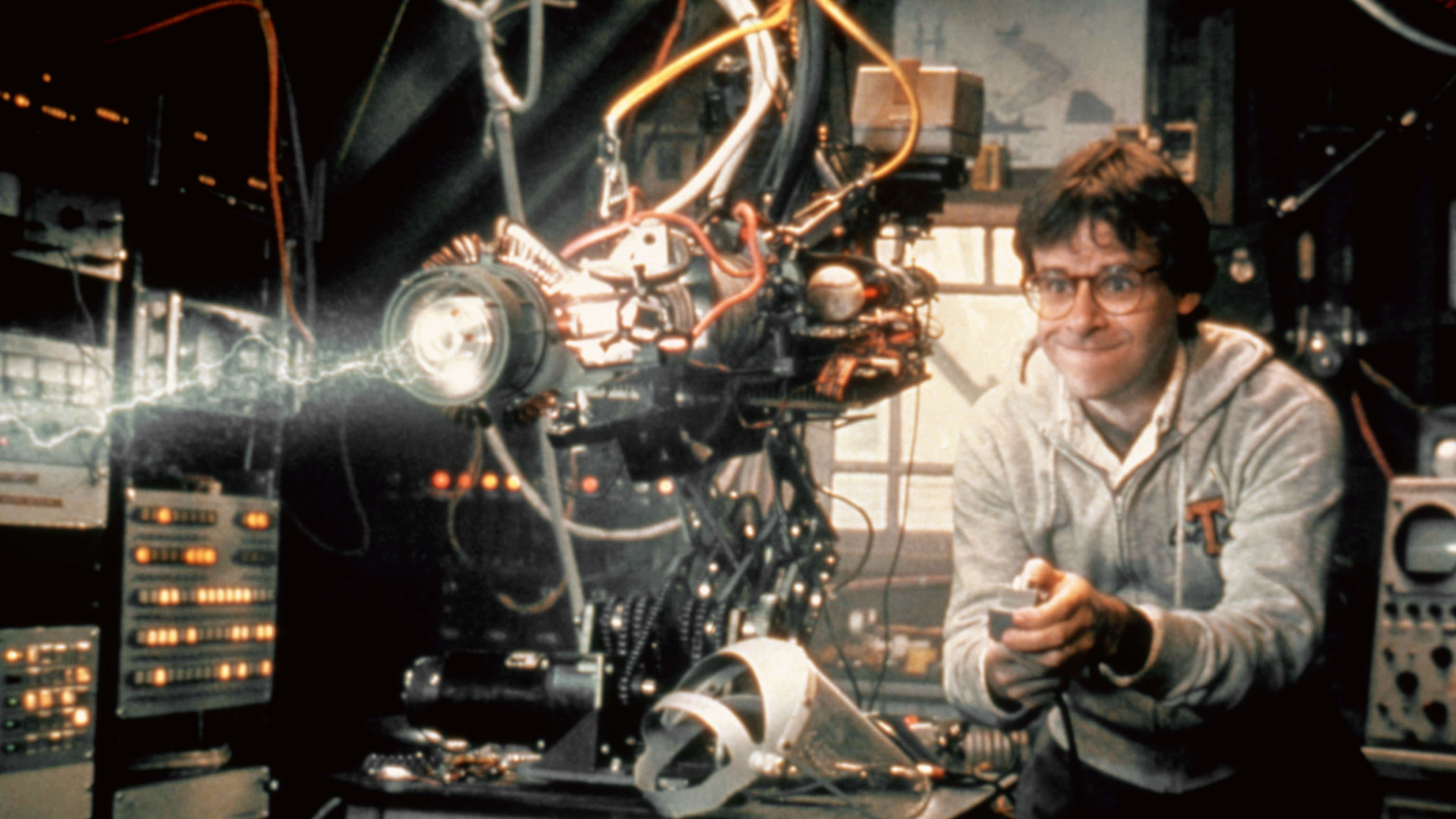We were promised jet packs: 8 long-awaited innovations that will never come
Where's our hoverboard, damn it?!


Innovation has the power to change the world in some truly wondrous ways. Just think of how society has changed in the wake of key inventions such as the motorcar, jet engine and the internet.
From a macro level with cities and cultures crafted by new inventions to an individual level where a life has been changed for the better thanks to a gadget or tool, innovation has been the driving force.
- Do you have a brilliant idea for the next great tech innovation? Then enter our Tech Innovation for the Future competition and you could win up to £10,000!
However, innovation of all sizes requires thinking big, and attempting things that common knowledge would suggest is impossible or not worthwhile. And, while this can often lead to remarkable breakthroughs, in other cases it can lead to pipe dreams that will likely never materialise.
Here are eight of those fantasy innovations that we loved in fiction but that haven't materialised – and, arguably, that will never arrive. From radical new forms of transportation, to physics-bending engines, and onto remarkable new materials, these innovations are super cool, but highly unlikely.
1. Hover boards
We've all seen the iconic hover board chase in Back to the Future Part II and, yes, we've all thought just how incredibly cool it would be in real life if we too could glide as gracefully over water as we do over tarmac.
And, excitingly, hover boards of a kind do already exist (see above video), with the mad, high-tech prototypes hinting at the dream that many want to see realised for girls, boys and adults across the world.
Unfortunately, the chances of hover boards materialising for the mainstream any time soon are very, very low. Not only are the hovering results janky and inconsistent in most cases, but the cost to make and operate these inventions is sky high.
Get all the latest news, reviews, deals and buying guides on gorgeous tech, home and active products from the T3 experts
As such, the time when boys and girls across the globe are unwrapping hover boards on Christmas morning seems extremely far off.
2. Human teleporters

Human teleportation is considered by many to be the Holy Grail of technological innovation and, simply put, it is easy to see why. Imagine having the ability to teleport anywhere on Earth in the blink of an eye. It would sure make those breakfast meetings in Tokyo a lot easier to stomach, that's for sure.
The good news? Scientists proved back in 1993 that perfect teleportation is possible, in the sense that it does not fly contrary to the laws of physics.
The bad news? So far the only thing that scientists have successfully teleported is photons, using quantum entanglement, with work today centred around figuring out how to use the phenomenon to transfer info between the two.
Until science can figure out how to control and manipulate the transfer of photons, there is unfortunately no chance of teleporting the estimated 32 trillion cells in each human being.
3. Lightsabers
One of the most iconic sci-fi weapons of all time, and something that everyone has at one time dreamt of wielding, the lightsaber is as cool as it is incredibly far away from being available to own.
Firstly, what practical real-world use would they serve? The limited applications of a lightsaber means you'd certainly struggle to drum up funding for a project to manufacture them, but even if you could, science and physics would then almost certainly stand in your way.
The main reason for this is that the amount of energy required – energy that would need to be contained in a tiny hilt – for a lightsaber to work as depicted in the Star Wars films is absolutely massive and far beyond current technology.
And this is without even going into the challenge of engineering the blade itself, which would likely involve structuring and controlling plasma.
4. Time machines

Just imagine the possibilities for good – and, with humans involved, insane damage that could be achieved – if someone successfully built a time machine. It truly would be a world-changing innovation.
The interesting thing with time machines, though, is which way they are designed to travel. The classic time machine from fiction has the ability to go backwards or forwards in time. However, current scientific thought believes that going forwards in time should be easier than going backwards.
Well, it's easier providing you can travel close to the speed of light and exploit an effect of special relativity where time passes, in relation to objects not travelling at close to the speed of light, more slowly (time dilation).
Any form of time travel would require a piece of technology that can harness and control a vast amount of power, too, so again this isn't something your mate Dave is going to knock up in his garage at the weekend.
5. FTL drives
As it is impossible to travel faster than light in our present physics model (thanks, Einstein), the idea of some company innovating a jump or FTL (faster than light) drive seems extraordinarily far-fetched.
Again, not only would you need to be able to call on and manipulate a dump truck-load of energy, but you'd have to find a way to circumnavigate the universal speed limits contained in the theory of special relativity.
That said, it may not be totally impossible to travel faster than light. Theoretical physicist Miguel Alcubierre conceptualised a device in 1994 (called, naturally, the Alcubierre drive) that would allow space-time to be manipulated both in front of and behind a spacecraft to make it travel faster than light.
Of course, making that drive and supplying it with the energy that would be needed is a different problem altogether.
6. Flying cars
Despite a new invention being dubbed a "flying car" every couple of years, these machines are in fact nothing other than incredibly expensive light aircraft modified to trundle around on some wheels in a laughably slow and unsporty manner. What we're all actually waiting for is a car that can fly, not a plane with foldable wings and extra tyres glued on.
Unfortunately, though, material science right now is simply nowhere near advanced enough to produce a vehicle that, engine and power generation aside, could be affordably constructed and sold on the mainstream market. If you had the budget of the U.S. Military maybe you could build a prototype, but then you'd face the difficulty of getting the project ratified and legislation passed to allow their use.
Current development in hydrogen engines does dangle a small glimmer of hope for the flying car dream, though, which after further work could deliver the power and cost-effectiveness necessary.
7. Invisibility cloaks

Just think of the hi-jinks that would ensue if a real-world invisibility cloak was invented
One can't help thinking just how much mischief could be achieved with an invisibility cloak, and we're not talking Harry Potter-style cloak of invisibility hi-jinks either! The grim reality, though, is that if anyone does innovate in the personal cloaking field, then it is likely some black ops military organisation who benefits, not us civilians.
Cloaking devices being worked on today involve interesting applications of metamaterials and active camouflage, which aim to guide light around specific objects or to change colours and patterns to match the surrounding environment.
These techniques can deliver an invisibility of sorts, as shown in the above image, but they are a long way away from making someone or something completely disappear. We guess we'll have to wait a little longer before we can go pay a covert visit to the Cadbury World.
8. Shrink rays

No amount of innovation is likely to lead to a mad father accidentally shrinking his children. We don't think it is, anyway...
While we're not sure what serious applications a shrink ray would have, maybe aside from creating adorable micro-sized pets, its invention would surely predicate the invention of an enlargement ray, which would be useful in the food production industry.
Unfortunately, due to the basic fact that atoms don't shrink (the size and construction of the nucleus of an atom and surrounding electrons can't be changed), some scientist inventing a shrink ray doesn't seem likely for the foreseeable future.
After all, even if a shrink ray were to be created somehow, then a way of dis-attaching the shrinking process from mass would have to also be invented, as otherwise the shrunken human or object would be small but physics-bendingly dense.
This article is part of our Tech Innovation for the Future series, brought to you in association with Honor.

Rob has been writing about computing, gaming, mobile, home entertainment technology, toys (specifically Lego and board games), smart home and more for over 15 years. As the editor of PC Gamer, and former Deputy Editor for T3.com, you can find Rob's work in magazines, bookazines and online, as well as on podcasts and videos, too. Outside of his work Rob is passionate about motorbikes, skiing/snowboarding and team sports, with football and cricket his two favourites.